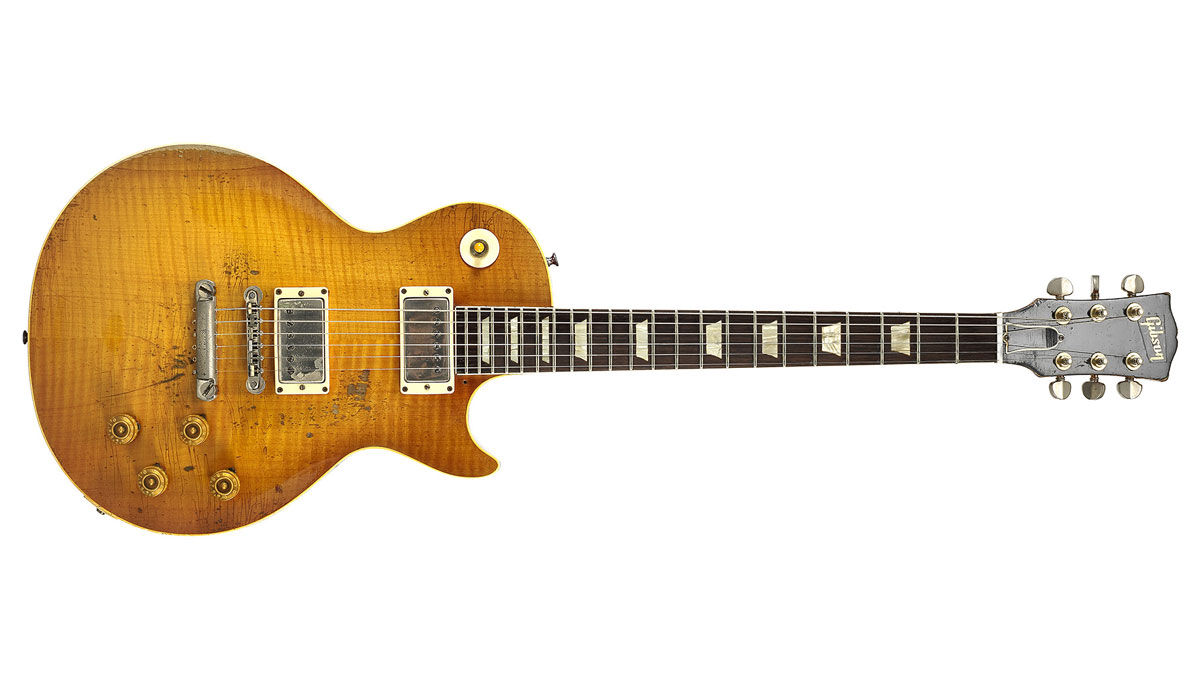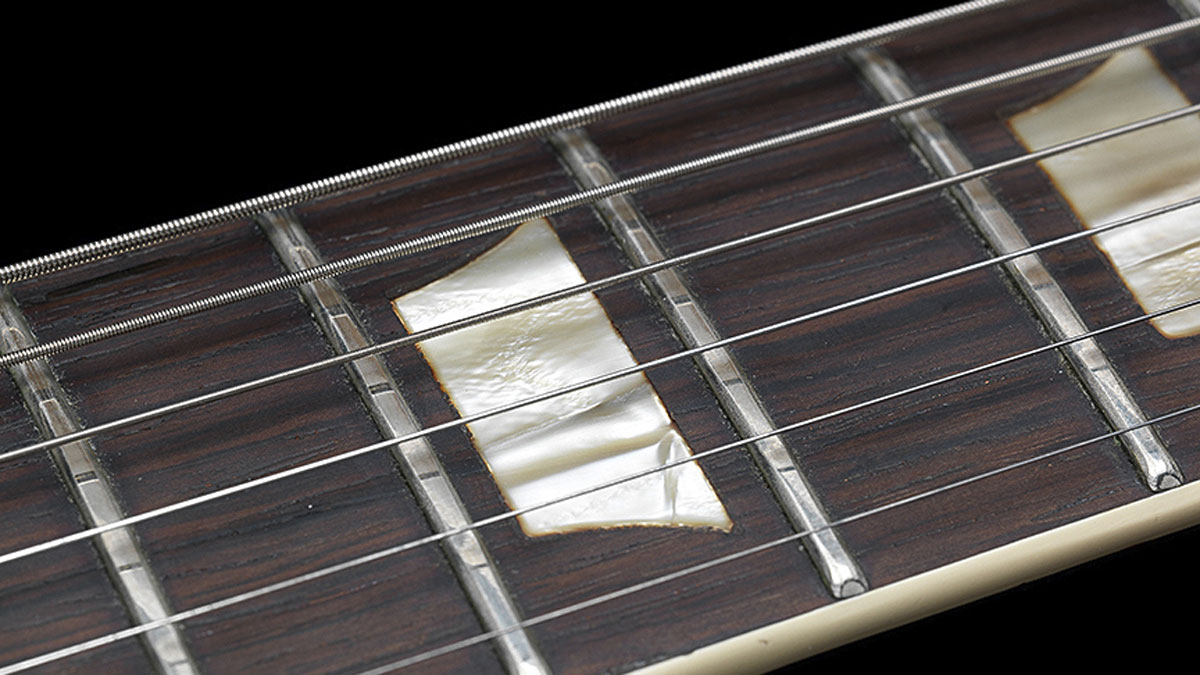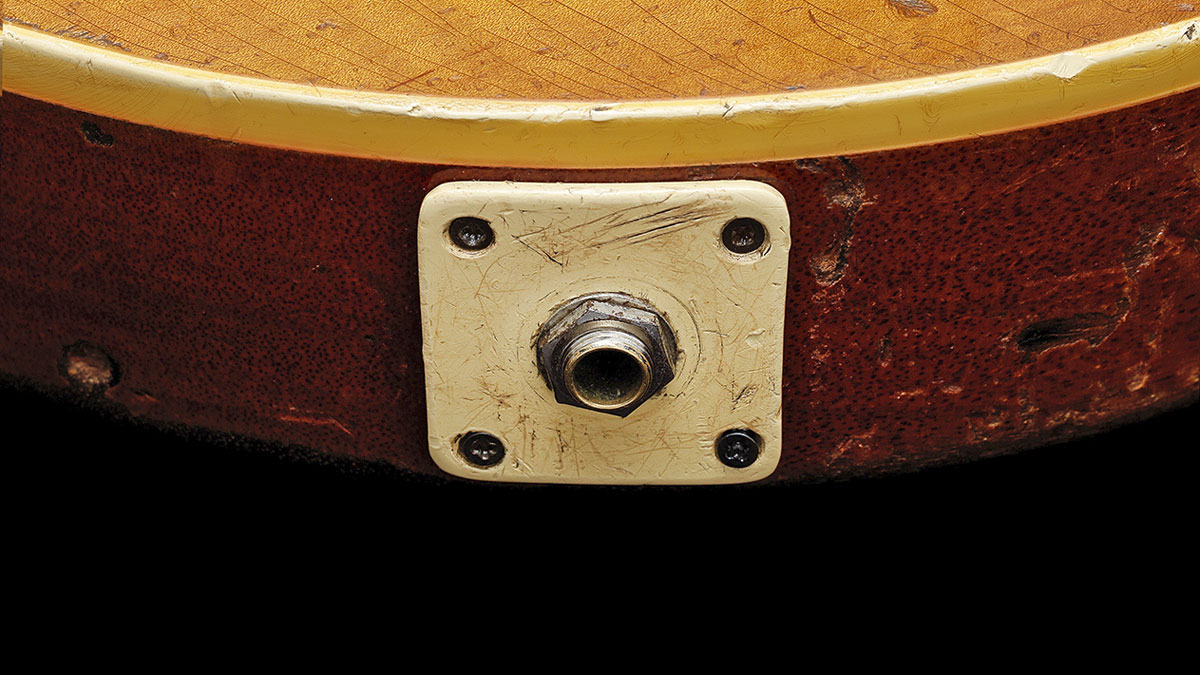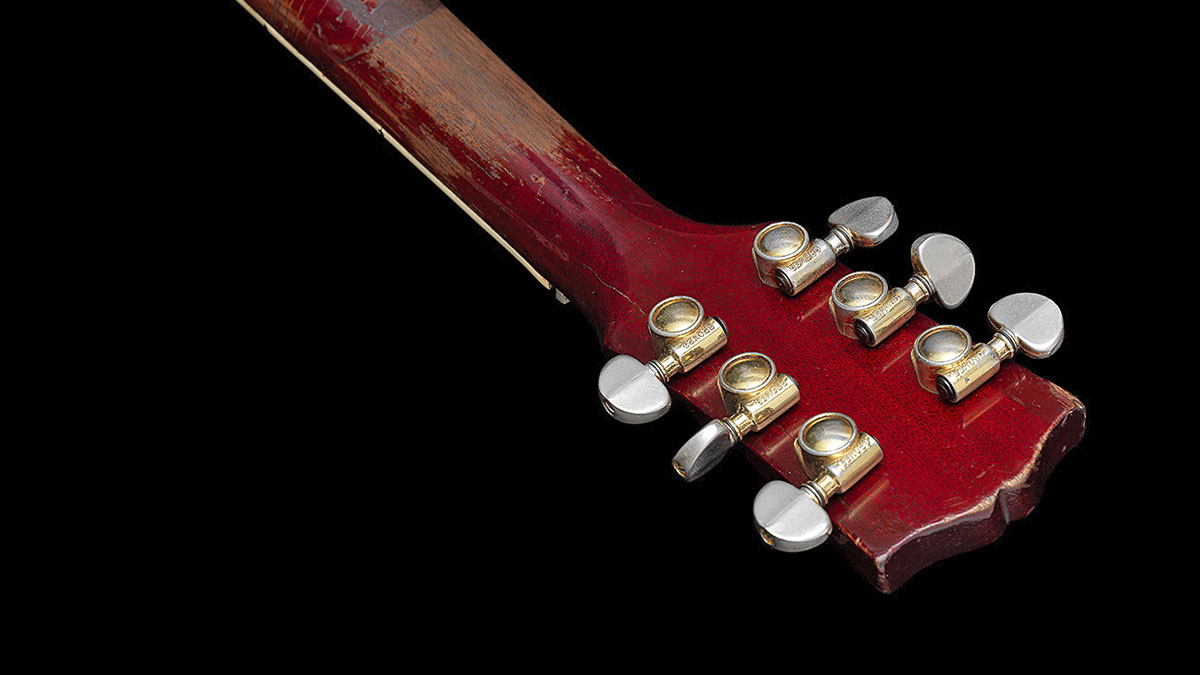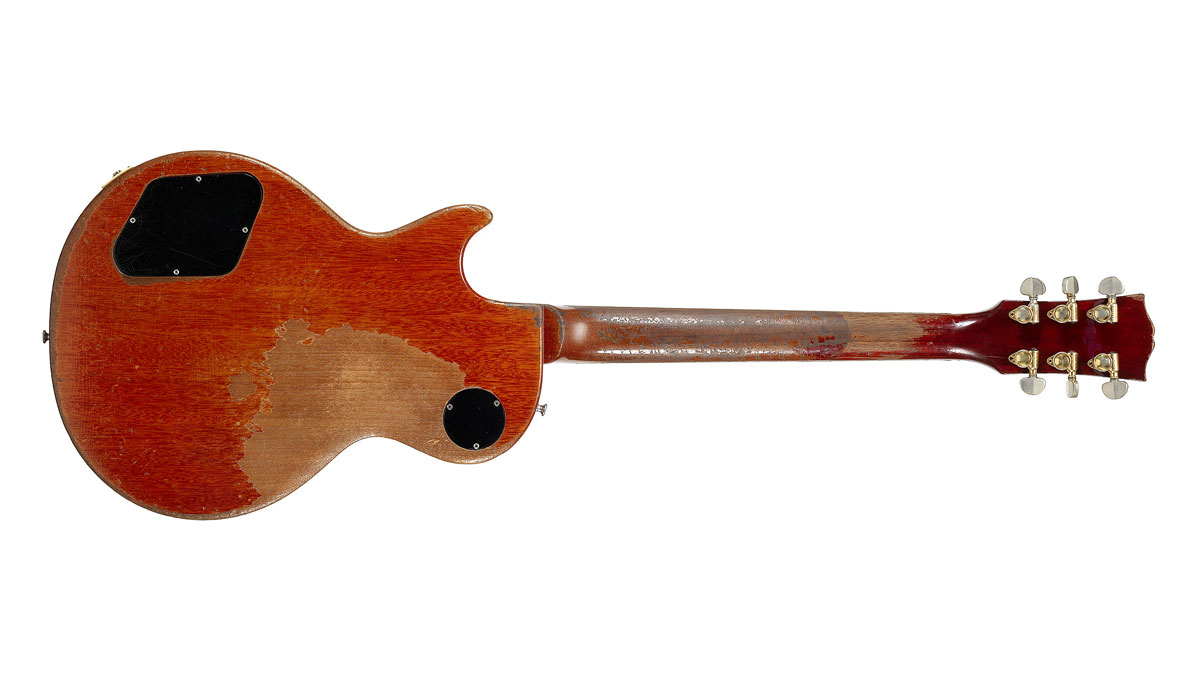Paul Kossoff's 1959 Les Paul - in pictures
Up-close and personal with the Free man's iconic axe

Introduction
Before the auctioneer’s hammer fell on another iconic instrument back in December, we caught up with now-previous-owner Arthur Ramm to reveal the story behind the Paul Kossoff Les Paul...
The tale begins when guitarist Arthur Ramm was playing with a band called Beckett back in the 1970s. One night, they were booked at Newcastle’s Mayfair Ballroom as a support act to Free and tragedy struck when Paul Kossoff’s treasured ’59 Les Paul was damaged, rendering it unplayable.
Koss sought out Arthur and asked if he could borrow his guitar, a late-60s Les Paul
Rushing back to the venue’s dressing rooms, Koss sought out Arthur and asked if he could borrow his guitar, a late-60s Les Paul. By the time they had completed their set, the Free man had become quite attached to Arthur’s guitar.
“He said he really liked the guitar and asked me if I would sell it,” Arthur remembers. “I said I wasn’t really interested, but he said, ‘I’ve got another one, I may be able to swap with you…’”
Kossoff then offered Arthur the Les Paul he’d played at the Isle Of Wight Festival, but Arthur decided that if a swap was in the offing, then he’d like the one that Koss had damaged that night.
Surprisingly, Koss agreed, saying that he would get the guitar repaired and then do the deal. Meanwhile, the two guitarists exchanged instruments, Arthur taking the Isle Of Wight guitar and Koss heading off into the night clutching Arthur’s 60s Sunburst.
Don't Miss
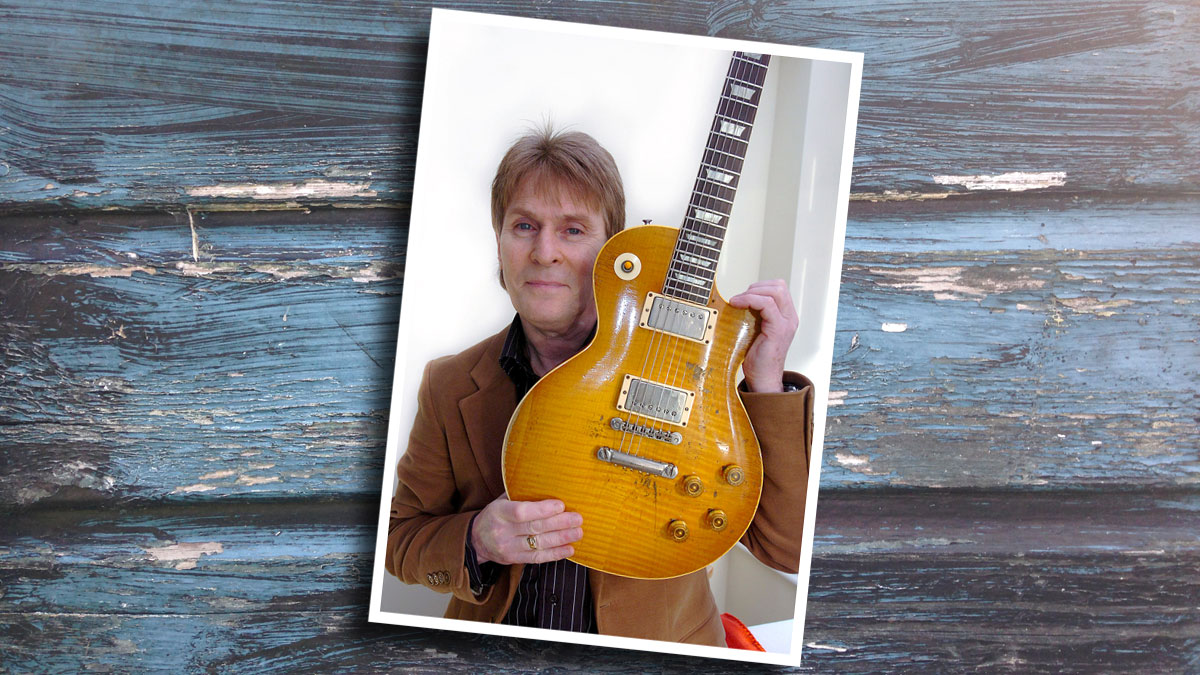
As seen on TV
A few months later, Arthur was watching BBC Two’s Old Grey Whistle Test one night when he thought he spotted Kossoff’s LP.
“Roxy Music were playing and I noticed straight away that Phil Manzanera was playing a Les Paul and I was quite certain that it was the Kossoff guitar. So I rang Paul up and said, ‘Is that the guitar?’ He goes, ‘That’s correct.’ So I said, ‘Well, can we do the deal?’”
I didn’t ask him if he was going to sell the guitar; I didn’t bother about that, I thought that episode was finished
But it was too late. Since the two guitarists had exchanged guitars, Koss had fixed his guitar and traded it for a black Les Paul that belonged to Roxy Music’s bass player.
What’s more, a few days later Kossoff phoned Arthur and said he’d like to give Arthur his own guitar back in exchange for the Isle Of Wight Les Paul.
“Of course, I could have refused,” laughs Arthur, “but I was so deflated about it, I said, ‘Yes, okay - the next time you’re in London I’ll bring it for you.’” A few months later, they swapped back and Arthur thought that was the end of the story.
Later still, Beckett broke up and their singer, Terry Slesser, went on to work with Kossoff in Back Street Crawler and would meet up with Arthur when the band played in Newcastle, offering him the opportunity to reacquaint with Kossoff.
“I didn’t ask him if he was going to sell the guitar; I didn’t bother about that, I thought that episode was finished,” he says. “And then it was such a shock to find that he had passed away on that flight to New York. I asked Terry what would be happening with the guitars and he said, ‘Well, I don’t know. I’ll find out,’ and he kindly asked around, got in touch with Sandy Chard, who was Paul’s partner, and she got in touch with David Kossoff, Paul’s father, and Sandy said to me, ‘David Kossoff would like to speak to you, because you really deserve the guitar because I think Paul let you down.’”
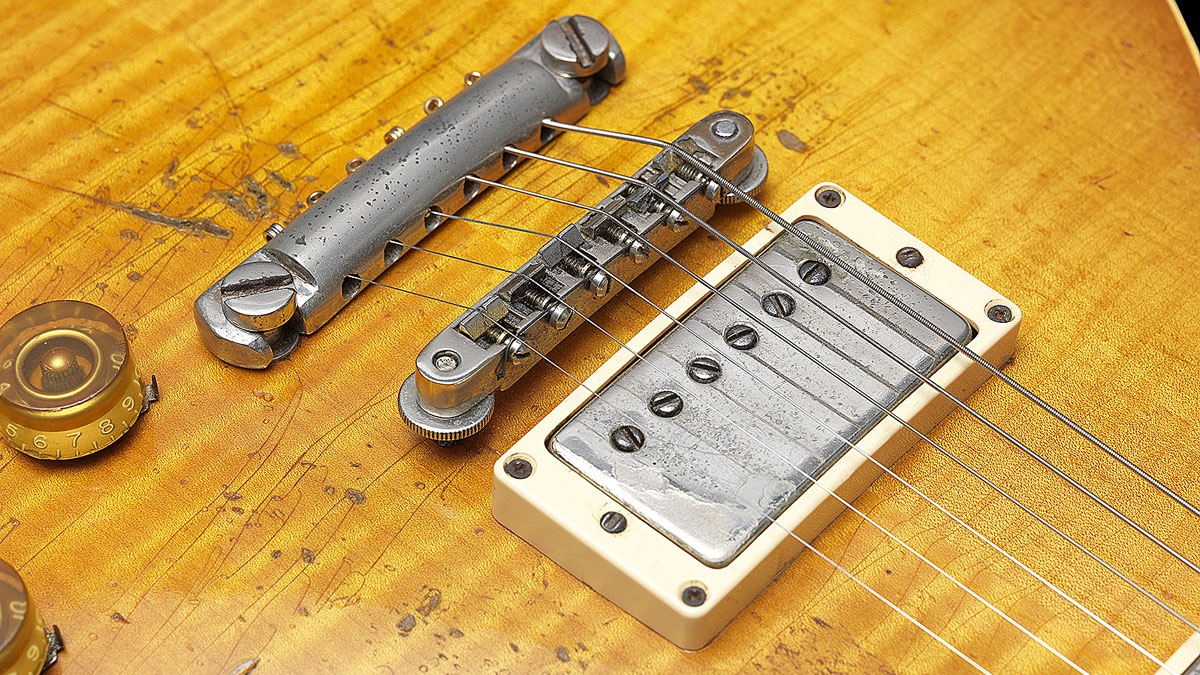
One careful owner
During their phone conversation, David Kossoff told Arthur that he wanted the guitar to go to someone who would play it and not just add it to their collection.
Arthur assured Paul’s father that he would indeed be playing the guitar and that clinched the deal, along with Arthur’s assurance that if he was to sell the guitar at any time in the future, it would be offered back to David Kossoff first.
I was getting to these gigs people were going, ‘Oh, is that Paul Kossoff’s guitar?’ and I was a little bit worried to admit it
“I had to pay for it, of course,” says Arthur. “I went down and picked it up from Paul’s house in Tilehurst, Reading and I’ve used it since 1976. I got it in May 1976 and used it right up to 1989.”
We wondered what the motivation was to retire the Les Paul at that time. “I started to get some very risqué questions when I was playing it locally,” he recalls.
“I was playing it in clubs and pubs and sometimes the universities, whatever gig we got. We got three or four gigs a month when things were good - there was plenty work up in the North East at that time.
“But I was getting to these gigs people were going, ‘Oh, is that Paul Kossoff’s guitar?’ and I was a little bit worried to admit it. They’d say, ‘It’s expensive isn’t it?’, and I would say, ‘Well, it’s a ’59; they do command a little bit more money than the normal ones.’”
So, Arthur began to feel concerned that keeping a valuable, rare instrument of this sort in the house and using it on the live circuit was taking a bit of a risk.
“You daren’t leave the stage to go to the loo in case someone wants to half-inch it. I mean, in the past, in the North East, quite a few guitars have gone missing with guys grabbing them and rushing out the door.
"So I decided to retire it from playing. I’ve played it once in a while - I would take it to a very close pub if it was only a mile away - but I wasn’t going to play it long distance.” After a while, the decision was made to sell the guitar.
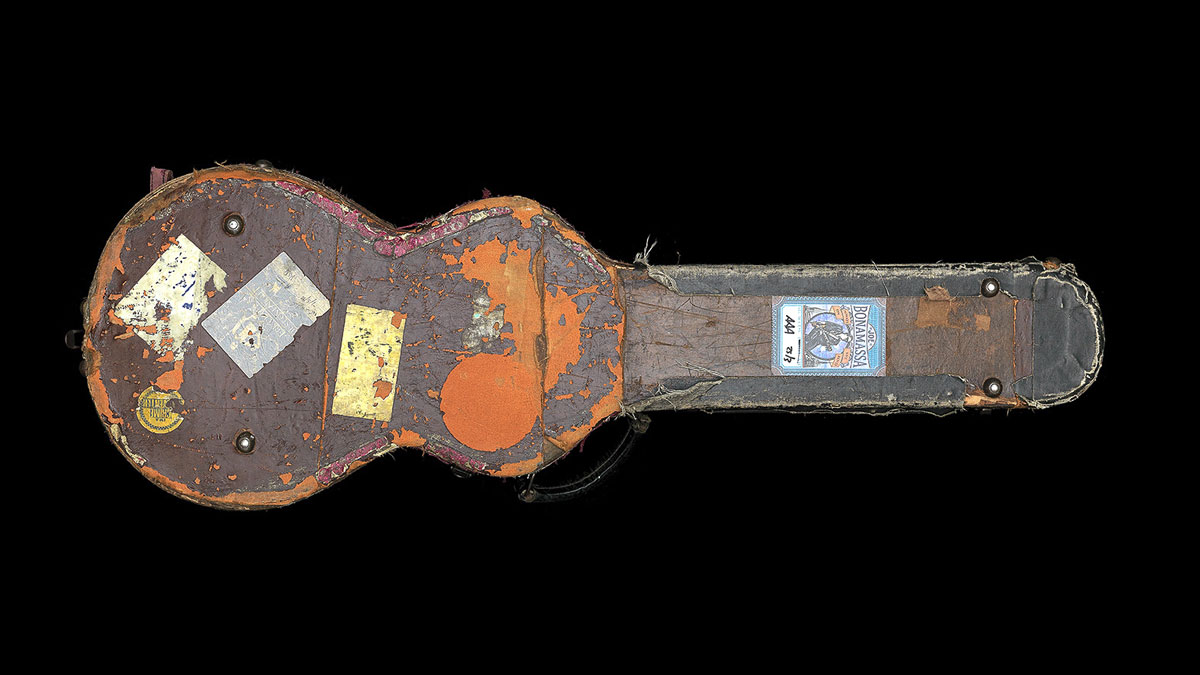
Letting go of Les
“I’m in my mid-60s now and coming up to nearly 40 years of having this wonderful machine. I think it’s time I let somebody else have the privilege of owning it.”
Looking at the pictures of the Les Paul’s battered case, we notice that one of the stickers is an Access All Areas pass to a Joe Bonamassa show. We all know that Joe collects late 50s flame tops, so does this mean that he has expressed an interest in the Kossoff guitar?
I’ve actually seen Joe [Bonamassa] now three times and I’ve watched him play it twice
“Well, Pat Foley, who’s part of the Gibson Custom Shop, knows Bonamassa very well and he just mentioned it to Joe, who was coming to Newcastle City Hall. I live in Sunderland, which is only 30 minutes away from Newcastle, and Joe said, ‘Oh, I’d love to meet the guy who’s got the guitar. Maybe I could see it?’
“So I was absolutely bowled over. I was invited to go over to City Hall and let him see it and I opened the case and he went, ‘Oh, that’s a lovely guitar.’ He plugged it in and said, ‘My God, it’s the loudest Les Paul I’ve ever heard!’ It really is a loud guitar, I don’t know why.
“Joe asked me to come over to two gigs a couple of years ago. I took it up to him, so I’ve actually seen Joe now three times and I’ve watched him play it twice.”
